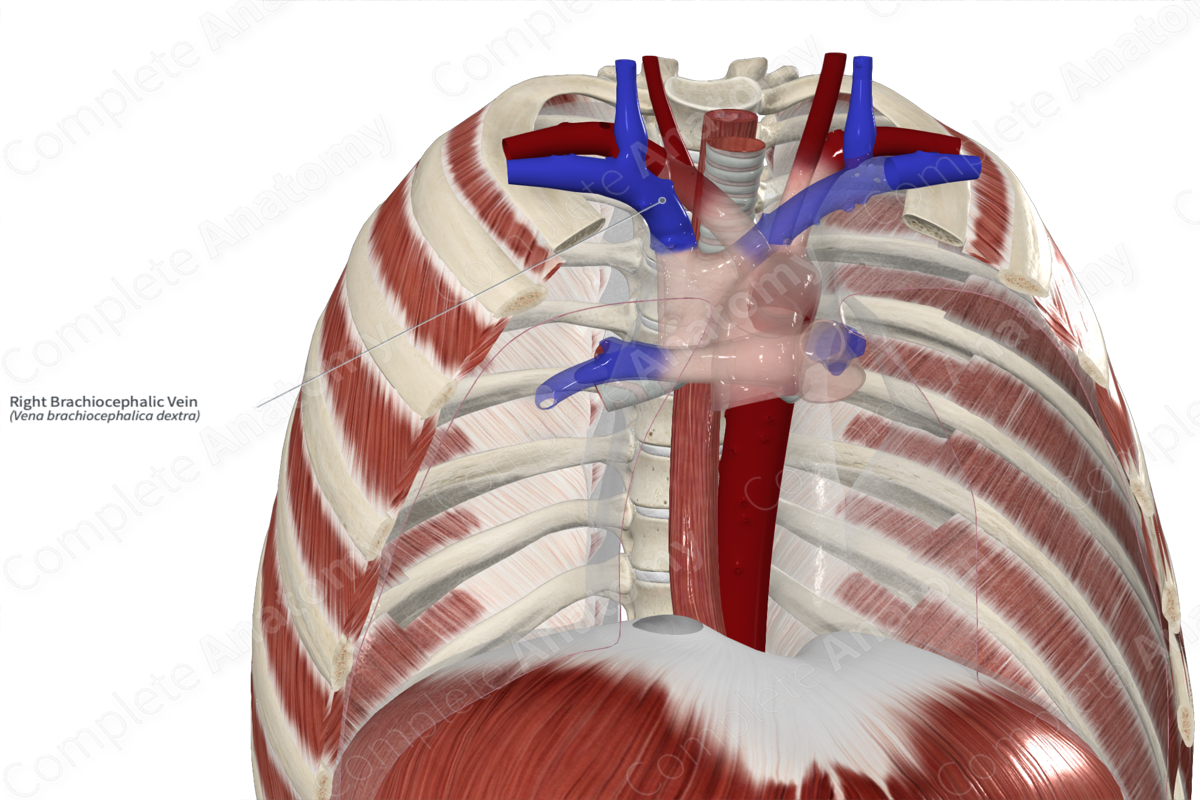
Quick Facts
Origin: Union of right internal jugular and subclavian veins.
Course: Descends vertically to join the left brachiocephalic vein.
Tributaries: Right vertebral, internal thoracic, pericardiacophrenic, supreme intercostal, superior intercostal, mediastinal, and inferior thyroid veins.
Drainage: Head, neck, and upper limbs.
Origin
The right brachiocephalic vein is formed by the union of the right subclavian and internal. Jugular veins at the root of the neck, posterior to the sternal end of the clavicle.
Course
From its origin, the right brachiocephalic vein descends almost vertically to the sternal end of the first costal cartilage. Here, it unites with the left brachiocephalic vein, thus forming the superior vena cava. The right brachiocephalic vein is anterolateral to the brachiocephalic trunk and the right vagus nerve.
Tributaries
Tributaries of the left brachiocephalic vein include, the left vertebral, internal thoracic, pericardiacophrenic, supreme intercostal, mediastinal, and inferior thyroid veins. The right brachiocephalic vein also receives the right lymphatic duct.
Structures Drained
The brachiocephalic veins drain blood from the head, neck, and upper limbs.
Learn more about this topic from other Elsevier products





